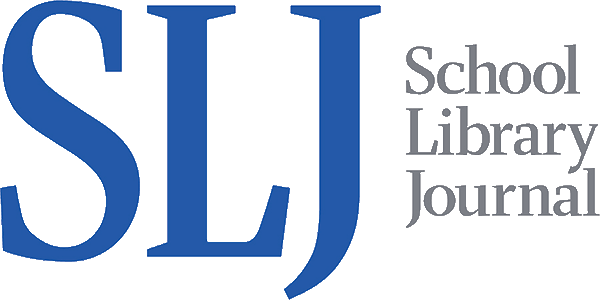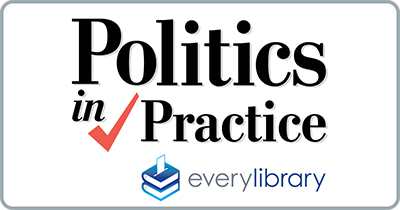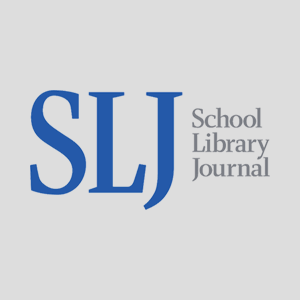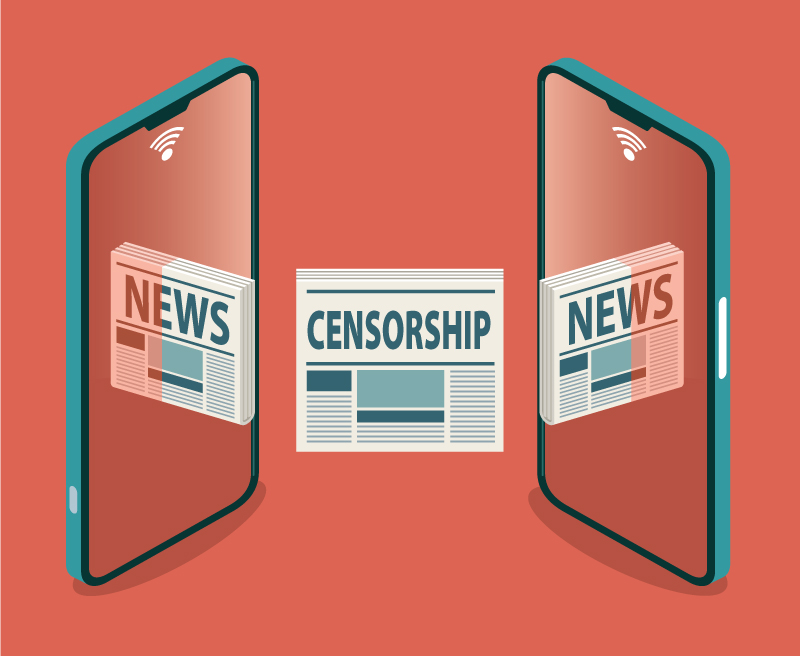How Candidate Surveys Help School Library Advocates Shape Education Policy
School board elections might not dominate national news, but they shape the heart of public education. What students read, how school libraries are funded, and whether intellectual freedom thrives or fades. As book bans escalate and misinformation spreads, school librarians are uniquely positioned to make a difference. It’s no longer enough to curate collections, we must also curate democracy.
One of the most effective and accessible tools to do just that is the candidate survey. By asking school board candidates where they stand on key library issues, school librarians and school library advocates can educate voters, hold leaders accountable, and ensure that the right to read remains protected in their communities.
It is important that any candidate survey project be designed and conducted in a strictly nonpartisan, non-persuasive manner. For non-profit organizations, a survey should never support or oppose a specific candidate or political party, and its questions should be framed neutrally, focusing on policy positions, governance priorities, and attitudes toward school libraries rather than ideological tests. Similarly, data collection should attempt to include all candidates equally and without bias. Results should be reported as factual information, presenting each candidate’s answers without editorializing or suggesting how people should vote. This approach not only keeps your work compliant with legal requirements (especially for 501(c)(3) organizations) but also enhances the credibility of the survey and the trust that voters, candidates, and community partners place in your organization’s ongoing advocacy.
Why Candidate Surveys Are a Game-Changer
Candidate surveys serve as vital advocacy tools that go beyond mere questionnaires. They play a crucial role in educating voters by shedding light on where candidates stand on significant issues such as book bans, school funding, and education policies. This information equips voters with the knowledge they need before casting their ballots. Furthermore, once candidates are elected, their written responses become an essential public record that can be referenced when decisions regarding books, budgets, or staffing arise, thus holding officials accountable.
Lessons from Texas: Turning Surveys Into Impact
In Texas, teacher and parent Frank Strong launched the Book-Loving Texans voter guide in 2022 to help voters understand where school board candidates stood on issues like book access and censorship. The project began with a few suburban districts but quickly expanded into a statewide effort covering 150 of the most populous school districts in the state.
Strong’s experience shows that many school board candidates run low-profile campaigns or avoid publicizing their views. Surveys compel them to state their positions, often for the first time, on issues like intellectual freedom, LGBTQ+ representation, or collection development.
Survey responses helped Strong, a co-founder of the Texas Freedom to Read Project, tailor messaging, identify mainstream versus fringe positions, and guide legislative outreach.
Strong’s voter guide uses a straightforward color-coded system to summarize candidate positions:
- Green: Supports school libraries and the right to read.
- Orange: Holds troubling views but is not affiliated with extremist groups.
- Red: Opposes intellectual freedom and is backed by anti-book organizations.
Launch Your Own Candidate Survey
Whether you’re part of a statewide library association, a local coalition, or a small advocacy group, you can run a candidate survey. Define your purpose. Is your candidate questionnaire’s main goal to educate voters, inform and influence candidates, hold officials accountable, or build a database for future advocacy? Start where it matters most, like in districts facing active censorship efforts, staffing shortages, or funding threats. Expand as your network and capacity grow. Design questions that are precise and specific enough to prevent vague answers. Focus on topics like:
- Book challenges and censorship
- Collection development policies
- School Library staffing and student-librarian ratios
- Funding priorities and budget transparency
Good survey design pushes candidates to take clear positions, often revealing contradictions in their responses.
Collecting Contact Information
Finding candidate contact information, especially email addresses, is often the most time-consuming and frustrating part of launching a survey. Most candidates for school board or other local offices don’t run large, well-organized campaigns. They may not have campaign websites, and some intentionally limit their public presence online. But with a bit of persistence and planning, you can reliably track them down.
Start with the clerk of elections or the county elections office. Every candidate must file paperwork to run for office. These filings are public records, and they often include mailing addresses, phone numbers, and sometimes email addresses. Contact the local election authority, usually the county clerk, registrar of voters, or school district elections office, and request the official list of candidates for a given race. Many offices will provide these lists upon request; some even post them online once filing closes.
Know the difference between campaign contact info and official emails. Incumbent school board members may have publicly listed email addresses associated with their official duties (for example, hosted on a district domain). However, those addresses are typically not intended for campaign communication. Reaching out about a candidate survey to their campaign contact address, which they use for electioneering, is a best practice. If only an official email is available, you can still reach out there, but be clear that you’re contacting them in their capacity as candidates, not as sitting board members.
If the candidate filing form doesn’t include an email address, try looking up campaign finance disclosures. These often include the contact information of a campaign treasurer or committee chair. These are people who can forward your survey. Local newspapers and League of Women Voters voter guides can also be valuable sources, as they often reach out to candidates for interviews and may publish contact details.
A best practice is sending a postcard to the mailing address in the official filing. Include a QR code or short link to your online survey (rather than a paper form). This approach can dramatically increase participation (and is particularly useful in states where candidate filings do not require an email address).
Candidate filing deadlines typically occur 60 to 90 days before an election, but the exact timing varies by state and district. Once the filing window closes, the official list of candidates is often available within a week or two. This is the best moment to begin your outreach, far enough ahead of the election that candidates are still in “introduce yourself to voters” mode, but close enough that the ballot list is final. Plan to launch your survey about 6–8 weeks before Election Day to allow time for distribution, follow-ups, and reporting.
Publishing and Promoting Results
Even if only 20–30% of candidates respond, the insights are valuable. Share your findings through voter guides or scorecards, press releases, social media, and blog posts or public testimony. Nonpartisan reporting helps shape public opinion and can be an indispensable advocacy tool long after the election ends.
When you share results, always center your work in a nonpartisan framework. Ask the same questions of every candidate, give each one the same opportunity to respond, and present their answers without commentary, endorsement, or advocacy. Avoid language that could be construed as urging a vote for or against anyone. Your role is to inform, not influence, and to provide your community with reliable, objective information about where candidates stand on issues that affect school libraries.
One Election at a Time
Candidate surveys are a practical, proven way for school librarians to influence local politics, inform voters, and ensure that every student retains the right to read freely and fully. They don’t require deep pockets or political connections, just time, focus, and a commitment to democracy. Start with one election, one district, or one set of questions.
Ready to get started? Explore sample questions, survey templates, and case studies at EveryLibrary’s Libraries2025 site and join the growing movement of librarians and activists turning advocacy into action.
Filed under: Advocacy
About John Chrastka
EveryLibrary’s founder is John Chrastka, a long-time library trustee, supporter, and advocate. John is a former partner in AssociaDirect, a Chicago-based consultancy focused on supporting associations in membership recruitment, conference, and governance activities. He is a former president and member of the Board of Trustees for the Berwyn (IL) Public Library (2006 – 2015) and is a former president of the Reaching Across Illinois Libraries System (RAILS) multi-type library system. He is co-author of “Before the Ballot; Building Support for Library Funding.” and “Winning Elections and Influencing Politicians for Library Funding”. Prior to his work at AssociaDirect, he was Director for Membership Development at the American Library Association (ALA) and a co-founder of the Ed Tech startup ClassMap. He was named a 2014 Mover & Shaker by Library Journal and tweets @mrchrastka.
ADVERTISEMENT
ADVERTISEMENT
SLJ Blog Network
31 Days, 31 Lists: 2025 Unconventional Children’s Books
101 Dalmatians: Penny’s Big Splash | Exclusive News
Amanda’s Favorite Reads of 2025
ADVERTISEMENT






